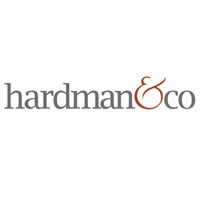 Lombard Risk Management Plc (LON:LRM) reported results on 26 May: as anticipated, a loss. LRM is all about the sustainable delivery of sales growth from investments in software, marketing and the expanded routes to market now in place. The new management team has stated it anticipates “strong revenue growth” FY17 and FY18. We reflect this in the FY17E and FY18E figures we have published today. The top line growth in FY17E continues to be invested to complete the programme of taking LRM to the next level. This is to expand into larger sales tickets into top 30 global banks. LRM’s strong profile here has been significantly enhanced by the Oracle tie-up earlier in 2016.
Lombard Risk Management Plc (LON:LRM) reported results on 26 May: as anticipated, a loss. LRM is all about the sustainable delivery of sales growth from investments in software, marketing and the expanded routes to market now in place. The new management team has stated it anticipates “strong revenue growth” FY17 and FY18. We reflect this in the FY17E and FY18E figures we have published today. The top line growth in FY17E continues to be invested to complete the programme of taking LRM to the next level. This is to expand into larger sales tickets into top 30 global banks. LRM’s strong profile here has been significantly enhanced by the Oracle tie-up earlier in 2016.
► Strategy: LRM is a leading provider of collateral management, regulatory reporting solutions. Expansion is through a combination of 1) investing in software and people essential for growth and 2) optimising route-to-market. These require investment ahead of revenue and have resulted in FY16 losses.
► Growth investment: FY16 sales grew £2.2m; expensed software development costs rose £0.8m and other costs rose £4.0m. This is part of the planned growth of the business and also the FY16 reshaping of the direct and partner-driven routes to market. Development growth is reflected in the rising amortisation.
► Valuation: LRM is set to achieve more than a 40% revenue increase between FY16 and FY18E. Whilst FY18E margins are below FY14 (as a result of a rise in amortisation charge), the FY14 PE of under c.5x illustrates the significant potential upside. For FY18E and beyond, there is significant positive operational gearing. With geared for upside, EV/Sales at only 1.1x historic give no credit to that upside.
► Risks: The order book rose 25% FY16, mitigating to a degree, the risks of driving investment ahead of anticipated accelerating sales growth. So too does absence of debt. Nonetheless LRM has seen cash outflows.
► Investment summary: FY16 sales growth for Lombard Risk Management Plc improved but incurred substantial growth and change-related costs. The investment case is driven by 99% gross margins and the anticipated sustained, strong revenue growth acceleration: a payback for investment to date and the structure changed implemented. We anticipate further investment costs FY17, with good top line growth for many years, but lower cost rises post FY17.


